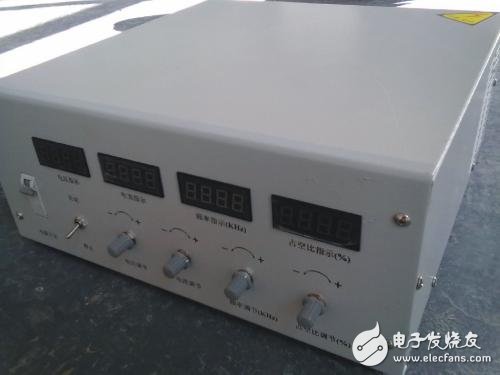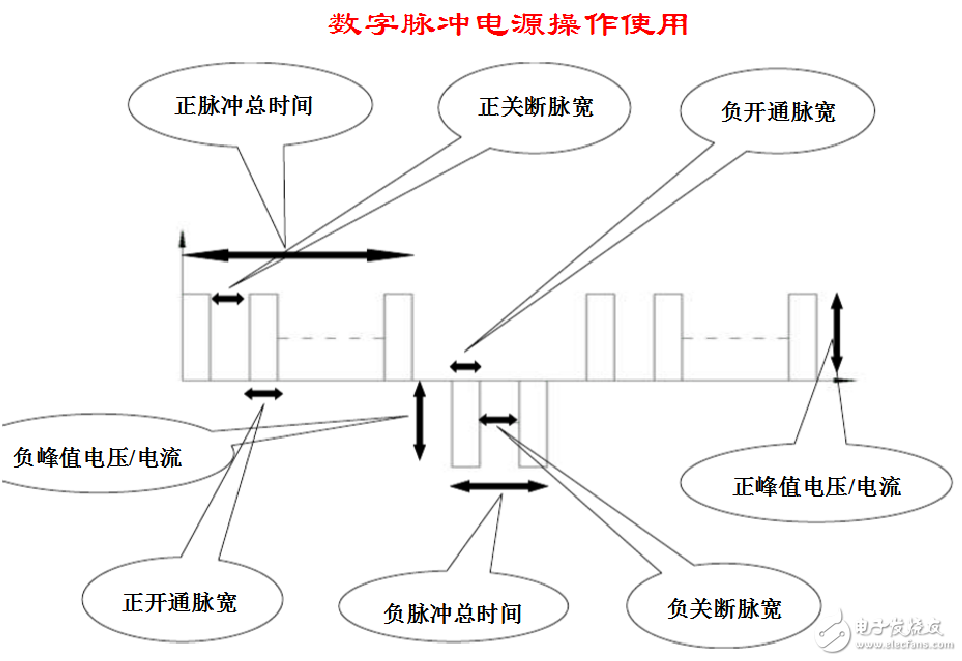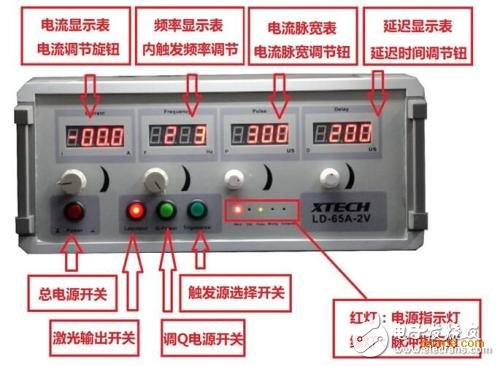The user's load needs to be powered intermittently, that is, according to a certain time rule, the load is powered for a certain period of time, and then the power is turned off for a certain period of time, and a cycle is formed by switching on and off. Repeatedly, the pulse power supply is constructed.


1. Output voltage : The peak voltage difference between the red and black terminals of the output terminal. The output voltage on the panel shows the absolute value of the voltage difference between the red and black terminals when connected.
2. Output current : The effective value of the current passing through the output loop is equal to the product of the current value (peak current peak value) and the duty ratio in the output loop when it is turned on.
3. Duty cycle : The ratio of the cycle time occupied by the high level to the entire cycle time. Duty Cycle = Pulse Width / (Pulse Width + Interpulse) 4. Output Frequency: On and off is called a cycle, and the output frequency is the inverse of the cycle.
5, pulse width (pulse width) : DC power-on time in a small cycle, that is, t.
6. Pulse interval (interpulse) : The time during which the DC cycle is interrupted by a small cycle, that is, Tt.
7, commutation time:
Forward commutation time: The total time of the small period with a positive voltage difference between the red and black terminals at the output.
Reverse commutation time: The total time of the small period with a negative voltage difference between the red and black terminals on the output.
How to set the parameters:
1. First connect the single-phase power supply corresponding to AC220V50HZ as required; turn on the power switch to observe whether the machine is normal;
2. Turn off the pulse start switch (press to start, lift to off); set positive and negative pulse parameters, set the total time of positive pulse; set the on pulse width; set the off pulse width; (refer to the above diagram).
Generally, the total positive time is greater than several times the total negative time. Otherwise, the plated metal is completely removed during the negative pulse time and will never be plated.
{The total time must be greater than (open pulse width + turn off pulse width); less than no output;
Pulse frequency = total time / (open pulse width + turn-off pulse width); hypothesis: total time = 2000 open pulse width = 10 turn-off pulse width = 2 then pulse frequency = 166HZ;
3. When using a single pulse: set the parameters of the negative pulse (total time, turn-on pulse width) to zero.
4. When using DC: set the negative parameter to 0, set the total time to the maximum, open the pulse width close to the total time, and turn off the small.
5. Press the pulse start switch;
6, then click on the display, enter the parameter settings - can be set parameters, generally in the precious metal plating, are used in the steady state, set the positive and negative voltage parameters, click on the screen to start, you can.
7. Click the running interface to watch the positive and negative pulse peak voltage and current of the output. It is displayed on the label. When running, you can add the peak current voltage and current arbitrarily.
8. To change the pulse parameters, the set parameters should be valid only when the pulse start switch is stopped.
Ningbo Autrends International Trade Co.,Ltd. , https://www.mosvapor.com